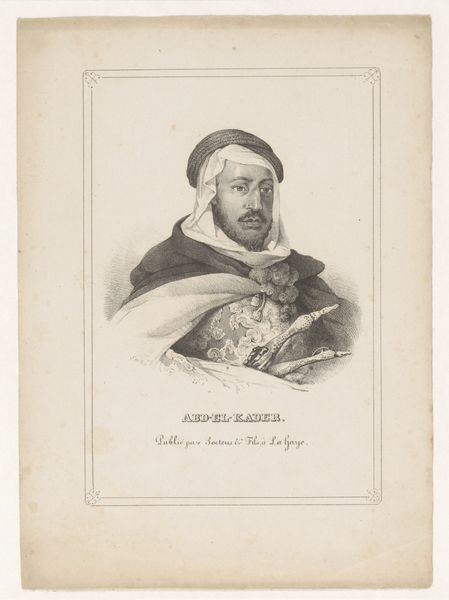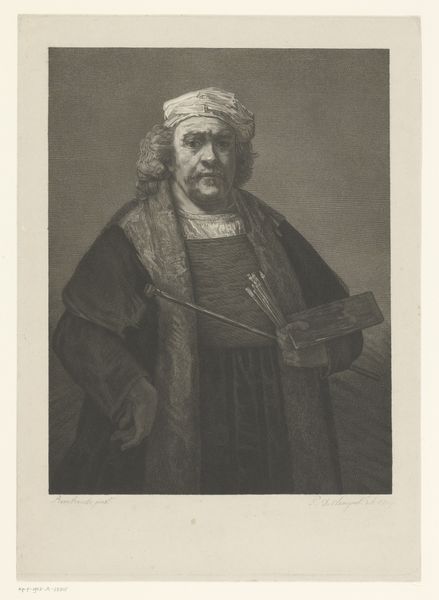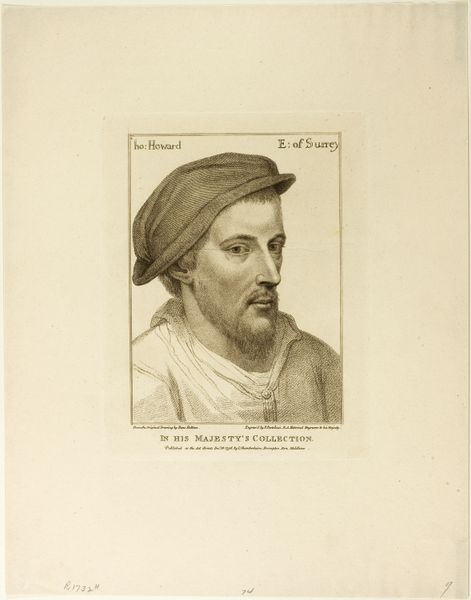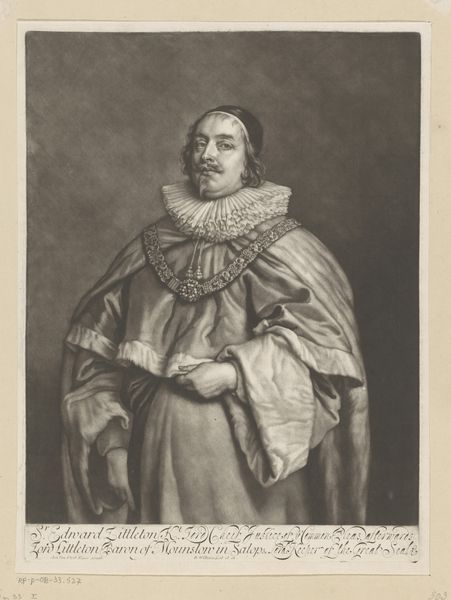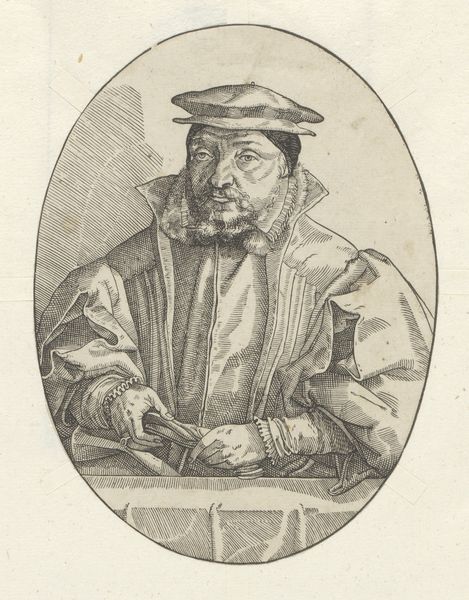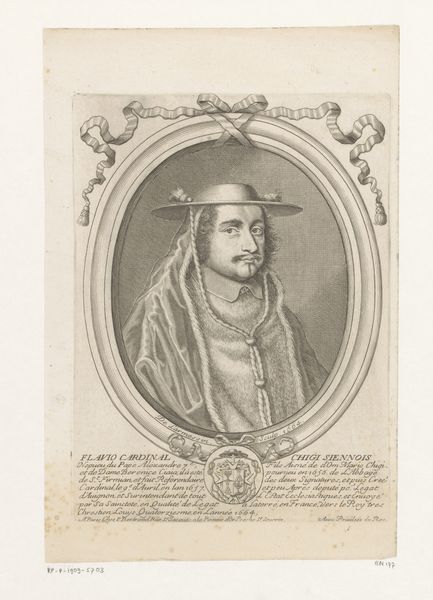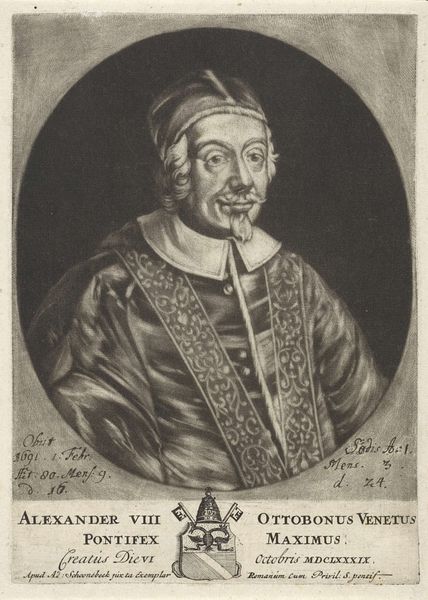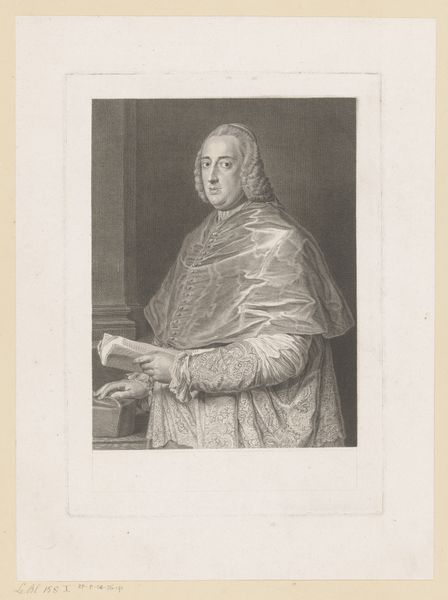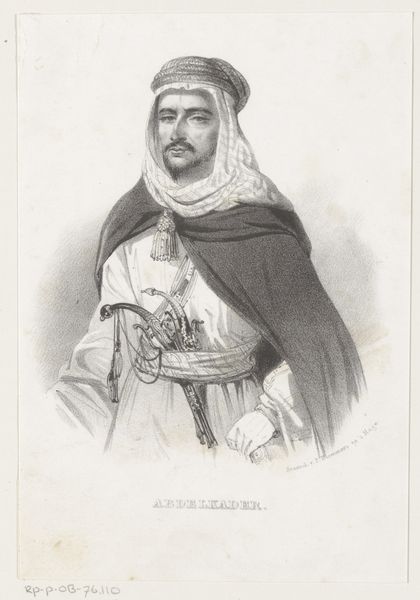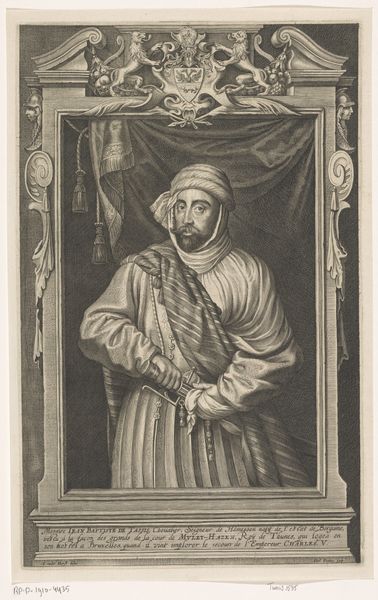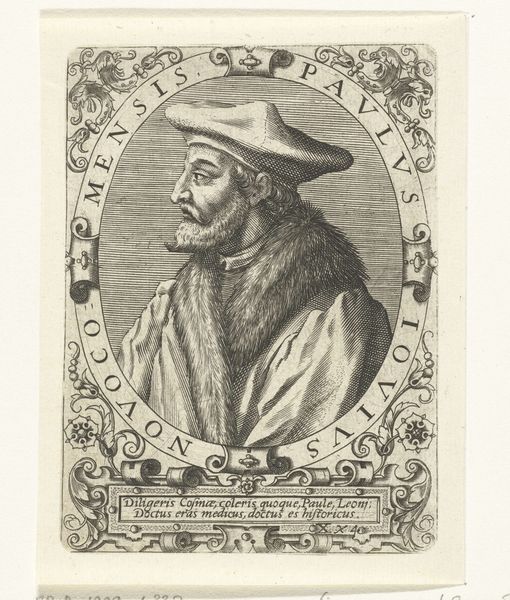
Dimensions: height 162 mm, width 112 mm
Copyright: Rijks Museum: Open Domain
Curator: I find myself immediately drawn into the gaze of this man. The print has an intensity to it. Editor: And what a man it depicts. Here we see *Portret van Abd el-Kader, bey van Mascara*, dating from sometime between 1842 and 1887, and residing here at the Rijksmuseum. Though the artist is, unfortunately, unknown, its medium—an engraving—lends an air of precise dignity to its subject. Abd el-Kader, was a central figure of Algerian resistance against French colonial rule, something which undoubtedly affects how we look at a portrait like this. Curator: The texture achieved through engraving really highlights the minute details—the intricate patterns on his robe, the careful rendering of the facial features, even the fabric of his head covering. There’s a real devotion to detail. The anonymous printmaker clearly knew their craft. Editor: Yes, it’s a product of its time, exhibiting definite Romantic and Orientalist styles that should make us consider our gaze here as Western viewers of an "Eastern" leader. Curator: It does seem designed to convey an air of authority—his direct gaze, the rich textures implying status. However, technically speaking, look at the way the engraver used light and shadow. The contrast creates volume, lending a sense of three-dimensionality despite it being a print. It makes it incredibly lifelike. Editor: That’s precisely where its power—and its problems—lie. By constructing him in this way, as the noble "other", it reinforces a very particular power dynamic, even while seemingly honouring him. It reflects, rather transparently, how the West understands and represents those it seeks to dominate or control. The ‘devotion to detail’ you mention feels much more like calculated observation for political gains, than as an earnest form of flattery. Curator: That’s a reading I hadn’t considered. I still appreciate the purely formal aspects of the work and find merit in its construction. Editor: Indeed. And recognizing the context is crucial to unveiling all of its various layers and purposes. Thank you for sharing your insights. Curator: And to you as well. Thank you for adding depth to how I now view this piece.
Comments
No comments
Be the first to comment and join the conversation on the ultimate creative platform.

